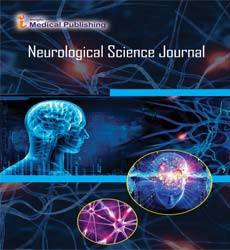Quantitative Assessment of Metabolic Changes in the Developing Brain of C57BL/6 Mice by In Vivo Proton Magnetic Resonance Spectroscopy
Abstract
Localized proton MRS was used to quantify cerebral metabolite concentrations in the thalamus of mice to assess the variation of major metabolites during brain development. Three sets of C57BL/6 mice were followed in a longitudinal study from a very early phase at post-natal day four (p4) until today 57 (p57). Experiments were conducted in accordance with Canadian animal care guidelines on a 7-Tesla small animal MR system. Specimens were examined under inhalation anesthesia using single-voxel MRS. A cubic volume with edge lengths of 1.9 mm was placed in the thalamus region of animals and point-resolved spectroscopy (PRESS) spectra were acquired with the following parameters (TR/TE/NEX=2500 ms/20 ms/600; Bandwidth=4000 Hz). The total of Choline containing compounds (tCho) and myo-inositol (Ins) had high concentrations at early exam points, decreased to minima between p14 and p19, and increased to adult levels thereafter. Taurine (Tau) had highest levels at p4, decreased persistently but fast in the early development and slow in the later stages of brain development. Our results indicate that biological variance must be considered if results from studies on mouse models of pathologies are compared with results from healthy controls during development. This aspect seems to be especially important between p10 and p21. Due to the high temporal resolution used at early time points in our study and the inclusion of multiple groups of animals at time points, our data contribute important aspects to the existing literature about mouse brain development.
Open Access Journals
- Aquaculture & Veterinary Science
- Chemistry & Chemical Sciences
- Clinical Sciences
- Engineering
- General Science
- Genetics & Molecular Biology
- Health Care & Nursing
- Immunology & Microbiology
- Materials Science
- Mathematics & Physics
- Medical Sciences
- Neurology & Psychiatry
- Oncology & Cancer Science
- Pharmaceutical Sciences
